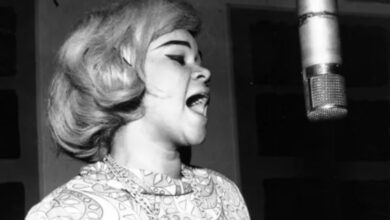How Nancy Sinatra’s “These Boots Are Made For Walkin'” Redefined Music And Empowerment
In the mid-1960s, the music scene was electrified by a bold anthem that would become synonymous with female empowerment: “These Boots Are Made for Walkin'” by Nancy Sinatra. Released in 1966, this track not only catapulted Sinatra to international fame but also left an indelible mark on pop culture.
Nancy Sinatra, born in 1940, was the eldest daughter of the legendary Frank Sinatra. Despite her father’s towering presence in the music industry, Nancy was determined to carve out her own niche. She began her career in the early 1960s, making appearances on television and releasing singles that garnered modest success, particularly in Europe and Japan. However, it wasn’t until her collaboration with songwriter and producer Lee Hazlewood that her career truly took off.
Lee Hazlewood, known for his work with guitarist Duane Eddy, saw potential in Nancy’s sultry voice and suggested a shift in her musical style. He proposed “These Boots Are Made for Walkin’,” a song he initially intended to perform himself. Nancy convinced him that the song would have a more profound impact if delivered from a female perspective, adding a layer of assertiveness and independence.
The recording session for “These Boots Are Made for Walkin'” took place in 1965, featuring the renowned session musicians known as the Wrecking Crew. The distinctive sliding bass line, played by Chuck Berghofer, became one of the song’s most memorable elements. Nancy’s confident vocals, combined with the track’s infectious rhythm, created a sound that was both fresh and empowering.
Upon its release, the song quickly climbed the charts, reaching the number one spot on the Billboard Hot 100 in February 1966. Its success was not limited to the United States; it became a global hit, topping charts in multiple countries. The song’s popularity was further amplified by a promotional film featuring Nancy in iconic go-go boots, a visual that became emblematic of the 1960s.
“These Boots Are Made for Walkin'” was more than just a commercial success; it became a cultural phenomenon. The song’s assertive lyrics and catchy melody resonated with the burgeoning feminist movement, symbolizing a break from traditional female roles. Nancy’s image—bold, stylish, and unapologetic—challenged the era’s norms and inspired a generation of women to embrace their independence.
The song’s impact on the music industry was significant. It showcased the power of strong, female-led narratives in popular music and opened doors for future female artists to express themselves more freely. The track’s innovative arrangement and production also influenced the evolving sound of pop and rock music during the 1960s.
Over the years, “These Boots Are Made for Walkin'” has been covered by numerous artists across various genres, attesting to its enduring appeal. Its presence in films, commercials, and television shows has kept it relevant, introducing the song to new generations and contributing to its lasting legacy.
Nancy Sinatra’s collaboration with Lee Hazlewood continued beyond this hit, producing other notable songs like “Summer Wine” and “Some Velvet Morning.” However, “These Boots Are Made for Walkin'” remains her signature song, a testament to her ability to capture the spirit of the times and leave a lasting imprint on popular culture.
In recognition of its enduring significance, the song was inducted into the Grammy Hall of Fame, cementing its status as a classic. Its influence is evident in the works of many contemporary artists who draw inspiration from its boldness and style.
Reflecting on the song’s legacy, it’s clear that “These Boots Are Made for Walkin'” transcended its era. It became an anthem of empowerment, a declaration of autonomy, and a milestone in the evolution of popular music. Nancy Sinatra’s performance captured a moment in time, yet its message continues to resonate, proving that some songs are truly timeless.
In the decades since its release, the song has maintained its popularity, benefiting from the advent of digital platforms. Its availability on streaming services has introduced it to younger audiences, ensuring that its legacy endures. The song’s continued relevance highlights the timeless nature of its message and the universal appeal of its melody.
Nancy Sinatra’s career, propelled by the success of “These Boots Are Made for Walkin’,” serves as an inspiring example of artistic evolution and resilience. She navigated the challenges of the music industry, established her unique identity, and delivered a song that remains a cultural touchstone.
In conclusion, “These Boots Are Made for Walkin'” is more than just a song; it’s a cultural artifact that encapsulates a pivotal moment in music history. Its creation, success, and enduring influence reflect the dynamic interplay of artistry, societal change, and the timeless power of music to inspire and empower.



